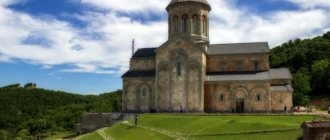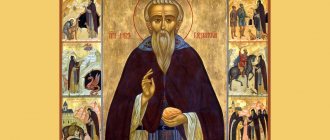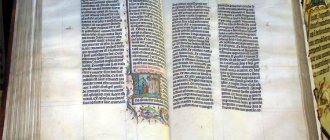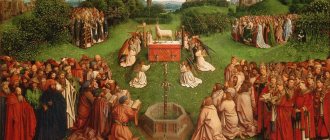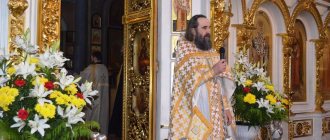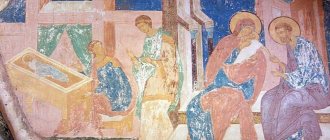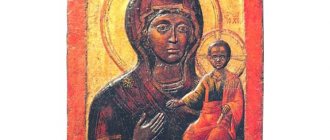Address: Mtskheta
Svetitskhoveli Cathedral, Mtskheta, Mtskheta-Mtianeti, Georgia
Every nation has its main shrine - the most famous temple. For Georgia it is Svetitskhoveli . There are many legends and stories associated with this iconic building. Svetitskhoveli, Mtskheta are the main and significant attractions of Georgia. A trip to Mtskheta is always ranked No. 1 among travel agencies in Georgia.
Legends and history of Svetitskhoveli
The very first legend that can be associated with the Svetitskhoveli Cathedral dates back to 33 AD. This accuracy of the date is certainly associated with the crucifixion of Christ.
A resident of Georgia, Rabbi Elioz, having learned about the trial of Christ, was sent by his mother to Jerusalem. His sister Sidonia asked him to bring her some memory of the Messiah. Elioz managed to become the owner of the tunic in which Jesus was dressed. Elios brought this tunic to his sister. Sidonia clutched the holy artifact to her chest, and after the story of the crucifixion, she died.
All attempts to separate the chiton from Sidonia were unsuccessful. So she was buried along with the Robe of Christ. A cedar tree grew at the site of Heaton's burial.
What follows is another legend directly related to the first.
Over time, the residents of Mtskheta forgot about the tunic and Sidonia, but noticed that sick (wounded) animals and birds approached the cedar and left healthy. The pagans began to revere the tree, which could heal. Saint Nino, finding herself in Mtskheta, asked King Mirian to build a Christian temple at the burial site of Chiton. Seven pillars were cut out of cedar, which served as the foundation of a wooden temple. However, one of the pillars could not be moved from its place, and myrrh began to flow from it. It was called the life-giving pillar “Svetitskhoveli”. The pillar was moved from its place by an angel and installed over the burial place of the tunic. The first temple was built around it, which was later rebuilt several times. In the center of the Svetitskhoveli temple there still stands a pillar, but around it there is a stone tent decorated with frescoes.
The modern Svetitskhoveli Cathedral was built at the beginning of the 11th century (1010-1029). The basis of the temple was the basilica built in the 5th century by King Vakhtang Gorgasal. The idea to rebuild the basilica into a domed church belonged to Catholicos Melchizedek at the beginning of the Golden Age of Georgia. The construction was entrusted to the architect Arsakidze. He increased the length of the basilica and added the remaining walls to it, creating a poem in stone called Svetitskhoveli. On the temple there is an imprint of the master’s hand and an inscription, thanks to which the name of the architect is known. The following legend, or rather, two versions of the tale regarding the right hand.
According to one version, the master’s hand was cut off so that he would never build anything like this again. Another version of the legend says that the young master’s right hand was cut off by order of the king, since the young man was mutually in love with a girl whom the king himself had his eye on.
There is a magnificent historical novel by Konstantin Gamsakhurdia “The Hand of the Great Master” about the construction of the Svetitskhoveli Temple.
Celebration in honor of the Chiton of the Lord and the Life-Giving Pillar
The celebration in honor of the Chiton of the Lord and the Life-Giving Pillar is a temple According to the legend of the Georgian Orthodox Church, the Robe of the Lord - the unsewn robe of the Savior (John 19:23) - came to the ancient capital of Georgia, Mtskheta, in the following way. Eleazar (or Elioz), rabbi of the Mtskheta Jewish community, which moved to Georgia from Jerusalem back in 70 BC. e., having received news from the Jerusalem high priest Anna about the upcoming execution of Christ, he hurried to Jerusalem, accompanied by Longinus of Karsnitsky. They witnessed the Passion of the Lord and the casting of lots for His clothing (John 19:23-24; Ps. 21:19).
At the time when the Most Pure Body of the Lord Jesus Christ was nailed to the Cross, mother Eliosa, who was in Mtskheta, heard the hammer blows in her heart and shuddered with great fear. Having told her daughter Sidonia about the sufferings of the Savior on the cross, innocently betrayed to death, Elioz’s mother died. Elioz purchased the Chiton of the Lord from a warrior, who received it by lot, and took it to Mtskheta. Sidonia, having met her brother Elioz with tears, announced to him about the death of her mother and her dying words. Elioz confirmed his mother’s words and showed his sister the Robe of the Lord. Taking the Chiton, righteous Sidonia kissed him, pressed him to her chest and immediately fell lifeless.
No one, including King Aderk (2 BC - 55 AD) could remove the hands of Sidonia and take Chiton. Righteous Sidonia (October 1) was secretly interred by her brother Elioz in the royal garden of Mtskheta.
The high priest of the Kartal Jews, Aviathar, a descendant of Rabbi Elioz, told Saint Nina about this. He believed in Christ after hearing St. Nina’s interpretation of the ancient prophecies about the Messiah and how they were fulfilled in the Lord Jesus Christ. Converted to Christ by Saint Equal-to-the-Apostles Nina, the Georgian king Mirian (265–342) decided to build a Christian temple on the site where the Robe of the Lord was kept. The huge cedar that grew on the grave of Sidonia was cut down, and they wanted to use its trunk as the main pillar to support the main dome of the temple, but they could not raise it. All night Saint Nina prayed for Divine help, and she was shown visions in which the historical destinies of Georgia were revealed.
At dawn, the Angel of the Lord approached the pillar and lifted it into the air. The pillar, illuminated by a wonderful light, rose and fell in the air until it stopped above its base. Fragrant myrrh flowed from a cedar stump. So the Angel of the Lord pointed out the place where the Robe of the Lord was hidden in the ground. This event, which was witnessed by many residents of Mtskheta, is depicted on the icon “Glorification of the Georgian Church”. Subsequently, on the site of the wooden temple, the majestic stone Cathedral of Sveti Tskhoveli was erected. The Life-Giving Pillar, at which many healings were performed, now has a stone quadrangular covering and is crowned with a light canopy that does not touch the cathedral vault. The pillar is located in the Sveti Tskhoveli Cathedral next to the model of the Church of the Holy Sepulcher in Jerusalem.
In honor of the Chiton of the Lord and the Life-Giving Pillar, the Georgian Church established a festival on October 1.
Description of the temple
Svetitskhoveli Cathedral in Mtskheta is a unique temple. It is impossible to determine symmetry in it. It was built on the site of previous churches, the walls of which were not completely destroyed and were preserved as architectural elements. What is also surprising is the lack of symmetry and order inside the temple: the supporting columns are not only of different shapes, but also not installed in a line.
The doors of the central entrance to the temple deserve attention. They are engraved with a scene of the angels installing the life-giving pillar.
The temple contains religious and historical artifacts. Among them:
- baptismal font, there is an assumption that King Mirian, the first Christian king of Georgia, was baptized in it;
- supporting pillars - the temple, there are now 8 of them, one of the pillars (Life-Giving) is surrounded by a stone tent, it stopped streaming myrrh after the invasion of Shah Abbas I;
- Svetitskhoveli frescoes - there are a huge number of them in the temple, many of them tell the story of the pillar, there are also mysterious frescoes that present a strange visualization of some biblical phrases;
- burials - the Svetitskhoveli temple in Mtskheta was a necropolis where Georgian kings were buried, some of them have not survived;
- the cloak of the prophet Elijah - it is believed that it is kept behind the altar;
- A piece of the “True Cross”, the one on which Christ was crucified.
Some historians and theologians believe that the location of the Svetitskhoveli monastery complex hides an encrypted message from the ancestors.
Bagrationi
CUTON OF THE VIRGIN
Chiton is the dress of the Mother of God, which, according to Christian traditions, She gave to the Orthodox Church as a guarantee of Her protection and intercession. The history of this greatest shrine of the entire Christian world is remarkable.
The Most Pure Chiton was bequeathed by the Most Holy Virgin before Her Dormition to two poor widows in Nazareth, who served Her and received benefits from Her.
One of these widows wished that this blessed gift would always be entrusted by inheritance from one girl to another. Thus, for three centuries the Sacred Chiton was preserved with great reverence in the Holy Land. Now the Most Pure Chiton is kept in the Zugdidi Museum (Georgia).
In 2000, a miracle happened - an image of Jesus Christ appeared on the Chiton. You can only see it with a cinema lens.
After the Dormition of the Blessed Virgin Mary, this greatest treasure of Christianity was transferred to the Greek Church.
Later, the brothers of the Byzantine Emperor Leo the Great, Calvin and Candide, passing through Greece in one of the convents, learned from the nuns about the miraculous power of the Chiton of the Mother of God - the sick were healed from it.
Candide and Calvin wanted to take possession of this shrine and, upon their return from Palestine, they made exactly the same reliquary, similar to the one in which Chiton was located. At night they changed the reliquaries.
The Byzantine emperor treated the shrine with great respect and placed it in the monastery of the Blachernae Most Holy Theotokos, specially built for this purpose. But later Heaton was considered lost. The first information about it appeared in the 5th century. Until the 14th century, all historical sources confirm that Chiton is located in the capital of the Byzantine Empire, Constantinople.
After the fall of the Byzantine Empire, one Archbishop brought this shrine to Mingrelia to save it from the Muslims. The middle part of the belt of the Chiton of the Mother of God, on which Her image was embroidered by the hands of the Most Holy Theotokos herself, also came to Georgia. According to one of the historical sources, he was taken from Byzantium by Bagrat III’s wife Helen and placed in the Bedia Monastery.
Then the Chiton of the Mother of God appeared in the Dadiani palace, from where it was transferred to the Khobi Monastery. In 1936, when the shrines removed from churches and monasteries were transferred to museums, the Chiton of the Mother of God returned to the Dadiani Palace.
In the Christian world, there are three miraculous images of Christ: on Ubrus, the Shroud of Turin and the image of the Savior on the Chiton of the Mother of God in Zugdidi.
There are many legends about the miraculous power of the Chiton of the Mother of God. The first miracle was recorded in 632. It is known that the Chiton of the Mother of God twice saved the capital of Byzantium, Constantinople, from the invasion of the Saracens and Egyptians.
One day, Constantinople was surrounded for six days by an army of Saracens led by the famous leader Moab. Patriarch Photius brought out the Chiton and touched it to the sea, and the stormy waves swallowed up the enemy ships...
One miracle was recorded in Georgia in 1891. Robbers stole the Heaton from the Khobi Monastery. Historical sources say that the entire population of Mingrelia and Khobi took part in his search, but to no avail. However, three days later, Heaton was found miraculously - in the forest, in a place glowing with an extraordinary light.
In the 17th century, Patriarch of Antioch Macarius wrote to the Patriarchate of Jerusalem: “I am happy that I am in Mingrelia in the Tsalendzhik Monastery and the Chiton of the Mother of God lies in front of me and I look at it.” Macarius of Antioch placed expensive fabric on the Chiton, cut out a similar one after it and consecrated it. A copy of the Chiton remains in Constantinople today as a shrine.
NAIL OF THE LORD
When in the 4th century the Cross of the Lord was found by Equal-to-the-Apostles Queen Helena, the mother of Emperor Constantine, during a pilgrimage to the Holy Land, four nails with which the Savior was crucified on Good Friday were found along with It. The Nail, now kept in the Cathedral of Christ the Savior, was brought to Russia at the end of the 17th century by the Georgian king Archil.
In the 4th century, Emperor Constantine sent it to the Georgian king Miriam, who converted to Christianity. Since then, the Nail was kept by the Georgian kings for a long time. In 1688, one of them - Archil Vakhtangovich - moved to Moscow and took the Shrine with him. Until 1715, the nail of the Lord was kept in the house church of King Archil. When, at the request of his brother, George, Archil sent him to Georgia, where a pestilence was raging, then the governor, stopping the ark with St. nail in Kazan, reported this to Emperor Peter I. The Emperor ordered the shrine to be transported to Moscow for storage in the large Assumption Cathedral. Before the revolution, the Nail was displayed for worship once a year - July 10 (23), on the day of the Robe of the Lord.
In the XVIII-XIX centuries. the structure of the burial place for the Nail was described as quite complex: a golden “quadrangular” ark and “a golden staff with five apples shaped with enamel, on which the nail is supplied...”, with a Georgian inscription at the end (“King Archil, son of Vakhtan the Georgian king and the king himself... of Empire and Kakheti, the second time he built this ark for the nail of the Lord, in the year of the creation of the world 7196 (1688)." In the 18th-19th centuries, the ark was additionally decorated (for example, in 1771, "Georgian princess Anna Georgievna Bakarova attached" to it "three zapanki with emeralds and a hairpin with gilded chains, for the most convenient attachment of that ark to the staff). By the 20th century, it already had a new lower part in the form of an “octagonal” chapel. The upper, old one, was in the form of a removable golden dome with cherubs decorated with “painted and transparent enamel, rubies and emeralds." This 17th-century headpiece remained from a gold chased ark with “folding” doors and bore the Georgian inscription “King of all Georgia David, son of Rusudana, built a vagina for the holy nail” (trans. Academician Brosset).
This is one of the four Nails with which our Lord Jesus Christ was crucified on the Cross on Good Friday. In appearance, it is a forged, rust-free antique nail, black in color with rare golden inclusions. The length of the Nail of the Lord is fourteen and a half centimeters, weight is about eighty-four grams.
On July 29, 2008, it was returned to the Russian Orthodox Church from the storerooms of the Moscow Kremlin museums. After the Liturgy and thanksgiving service on the occasion of the completion of the Council of Bishops and the celebration of the 1020th anniversary of the Baptism of Rus', President D.A. Medvedev presented 9 relics to Patriarch Alexy II, and among them was the Nail from the Holy Cross.
Unfortunately, neither Patriarch Alexy II nor his successor came up with a simple and fair idea - to return the Holy Nail to Georgia, to the rightful owner of this shrine - the Georgian people.
Cross of St. Nina
According to legend, one day the Mother of God appeared to St. Nina in a dream and blessed her to preach in her destiny (Georgia), handing the girl a cross made of grapevine. Waking up, Nina took two grape branches and, cutting off a lock of hair, tied them with a cross, as in the vision. The young Christian woman came to Georgia with this cross. The fact that the cross is made of grape branches naturally explains its uneven shape. This form remained characteristic of Georgia. Today, a cross with slightly lowered sides (“St. Nino’s cross”) is a symbol of the Georgian Orthodox Church.
After the death of Saint Nina, the cross was kept in the Svetitskhoveli Cathedral in Mtskheta until 458, but after the intensification of pagan persecution, the cross was taken by the monk Andrei and transferred to the Taron region, in Armenia. Later, the cross was hidden for about 800 years in various Armenian cities and fortresses. In 1239, the Georgian Queen Rusudan appealed to the Mongol commander Charmagan, who had captured the city of Ani, where the cross of St. Nina was located at that time, to return it to Georgia. Charmagan granted the queen's request and the cross returned to Svetitskhoveli. During times of danger, the cross was repeatedly hidden in the Church of the Holy Trinity on Mount Kazbek or in the Ananuri fortress.
In 1749, the Georgian Metropolitan Roman, leaving Georgia for Russia, secretly took with him the cross of St. Nina and gave it to the Georgian prince Bakar, who lived in Moscow. From that time on, for more than 50 years, the cross was kept in the village of Lyskovo, Nizhny Novgorod province, on the estate of Georgian princes. In 1808, Prince Georgy Alexandrovich presented the cross of St. Nina to Emperor Alexander I, who ordered the relic to be returned to Georgia. Since that time, the cross has been kept in the Tiflis Zion Cathedral near the northern gate of the altar in a silver-bound icon case. On the top cover of the icon case there are chased miniatures from the life of St. Nina.
Svetitskhoveli
In the sacred valley where the Kura and Aragvi rivers merge, in the historical capital of the kingdom of Iberia - Mtskheta (20 km from Tbilisi), there is the ancient Orthodox Cathedral of Svetitskhoveli, which for a millennium has been the main cathedral and spiritual symbol of Georgia, in which the coronations and burials of kings were held. Svetitskhoveli is listed as a UNESCO World Heritage Site as the largest surviving historical monument in Georgia.
According to legend, in the 1st century, local rabbi Elioz, who witnessed the crucifixion of Jesus Christ, bought part of the Robe of the Lord from the soldiers and brought it to Georgia to his sister Sidonia. But as soon as Sidonia pressed Heaton to her chest, she immediately fell dead. They could not take the sacred cloth from her hands, so they buried it with Sidonia. A wonderful cedar grew on the grave, which was worshiped as a deity and was considered healing.
Three centuries later, Saint Nina brought the good news of Christianity to Mtskheta. At her request, King Mirian III of Georgia founded a church on the site where Chiton rested. Seven columns were cut out of the sacred cedar for the wooden temple. However, it was not possible to uproot the stump, and fragrant myrrh flowed from its trunk. According to legend, this pillar worked miracles in healing people, so it was called Svetitskhoveli, which translated from Georgian means “Life-Giving Pillar.”
In the 5th century, a stone temple was erected on the site of the wooden church. Its remains can be seen through the transparent glass floor of the current cathedral.
In the 11th century, Catholicos of Georgia Melchizedek began construction of a new patriarchal church on the site of the old church. There is also a legend associated with this construction. “The architect Arsukisdze was invited to build the temple. Upon completion of construction, it turned out that the masterpiece he had built was significantly superior to the creations of his teacher. Then the offended teacher slandered the student, and the master's hand was cut off. According to another version, Arsukidze’s hand was cut off by order of the tsar so that he would never be able to build anything like Svetitskhoveli.” However, it is likely that this fact still took place, since above one of the arches of the cathedral facade, there is indeed a relief depicting a hand holding a square. The inscription under the relief reads: “The hand of God's servant Arsukidze. Remember."
Having become the main cathedral and center of Christianity in Georgia, Svetitskhoveli repeated the entire historical path of the Georgian people from desecration by the Seljuks, when the temple was used as a camel stable, to plunder by the Turks and Persians. The secret rooms of Svetitskhoveli served as shelter for local residents during raids and as a repository for valuable books and jewelry. In the 19th century, before the arrival of Russian Tsar Nicholas I, the surviving ancient frescoes were covered with several layers of lime. They were cleared of lime only in the 60s of the 20th century.
Svetitskhoveli Cathedral is distinguished by its majestic and harmonious architecture. The bas-reliefs of the western facade are almost completely preserved in their original form. The characteristic asymmetry of the building is best visible on the southern façade. Decorative arches of the northern facade emphasize the height of the cathedral of 54 meters.
The interior walls are painted with frescoes, most of which, unfortunately, have not been preserved in their original condition. Many icons have also been replaced, and the originals are kept in the national museums of Georgia. The large figure of Jesus Christ at the altar was painted by a Russian artist in the 19th century. The bas-reliefs are decorated with bunches of grapes, which is a feature of many Georgian temples.
In the southern part of the complex there is a small stone temple, which is a copy of the Chapel of the Holy Sepulcher in Jerusalem. It was built at the beginning of the 14th century to celebrate that Svetitskhoveli Cathedral is the second place in the world where the clothes of Christ lie. Other historical monuments include the 4th-century stone fonts in which kings were baptized and the remains of the original life-giving pillar. The cathedral became the tomb of Bagrationi. In front of the altar of the temple there is a burial place of Georgian kings, including Vakhtang Gorgasali - the founder of Tbilisi, Irakli II, George XII - kings of the Bagrationi dynasty and others.
In Svetitskhoveli with Viva-Georgia
The Viva-Georgia company organizes excursions to Mtskheta and Svetitskhoveli. During the trip, be sure to visit the Jvari temple, built on the site of a worship cross, once installed by the Enlightener Nina, and the Shiomgvime mountain monastery, which is one of the oldest active monasteries in Georgia.
Story
Svetitskhoveli is not the first temple built on this site. , a wooden church was erected here by Mirian III . The trunk of the sacred cedar tree served as its foundation, which later gave it its name - Svetitskhoveli.
The church did not stand for long and already in the 5th century a basilica was built in its place. Its construction is attributed to the merits of King Vakhtang Gorgasal. Unlike its predecessor, the basilica stood for quite a long time. In the 70s of the 20th century, Soviet researchers reached it and opened the upper foundations.
The Svetitskhoveli that we can admire now was built from 1010 to 1029 . On the site of the destroyed church, Supreme Patriarch Melchizedek I of Georgia built the same temple. The construction was supervised by the architect Arsakidze.
In the 1830s. The ancient frescoes decorating the walls of Svetitskhoveli were damaged: in anticipation of the arrival of Tsar Nicholas I, an order was given to paint over the painting. Local authorities feared that the dilapidated appearance of the frescoes would seem unpresentable to the St. Petersburg delegation for a temple of national significance. Subsequently, Russian artists painted Svetitskhoveli again. And after that, it was decided to restore the damaged frescoes.
How to get there?
Svetitskhoveli is located in Mtskheta, it is not difficult to find - it is visible from anywhere in the city.
If you are coming from Tbilisi, take the minibus at the Didube metro station, having previously purchased a ticket at the ticket office. Minibuses run from 7.30 to 20.30 every 15-25 minutes (the last flight back from Mtskheta is at 20.00).
You can also get to Mtskheta by train, which departs from Tbilisi station and costs 1 GEL. Go to Mtskheta station. In this case, get ready for a one and a half kilometer walking journey along the coast towards the center of Mtskheta.
Robe of the Lord
In Israel, a robe was the name for outer clothing or a cloak (himatium), with which a person was covered over a chiton and other clothing. This clothing of Jesus Christ was first mentioned in the Gospel of Matthew, in the story of a woman who suffered from bleeding for 12 years.
Healing of a woman who touched the robe of Jesus Christ
The evangelist says that the woman’s faith in the power of Christ was so great that she said to herself: “If I touch the hem of His garment, I will be healed,” which subsequently happened. Touching with faith the cloak of Christ saved and healed this woman not only from a physical illness, but also from a spiritual one.
Historical excursion and legends
Israel is a country with large temperature differences, so wearing outerwear there even in summer is quite natural. Jesus and His disciples often spent the night in the fields, so they always had warm clothes. The robe in this case is a seamless long chiton (shirt), which was worn over the main clothing and underwear.
The garment of the Lord is written about in the Psalter, when David wrote down a prophecy about the last moments of Christ’s life, “They divided His garments...” (Ps. 21:19). Further mention of her comes in the Gospel of Matthew in chapter 9, when a woman was healed by touching her clothes.
The last mention of Christ's clothing comes from the Gospel of John, chapter 19, in which the apostle describes how the soldiers at the foot of the cross cast lots to see who would be its next wearer. The further history of the cape is known from legend and historical church documents.
The Robe of the Lord is a garment received by lot by one of the soldiers who were at the crucifixion of Jesus Christ
There are several different traditions (Armenian, Georgian, Syrian and Jewish) that describe the movement of the robe, but they contradict each other. Western legend says that Queen Helen discovered the robe of the Lord in the 4th century when she was traveling through Palestine. She brought the relic to Trier, where it was preserved in the local cathedral. This version appeared in 1196 and 300 years later the veneration of the Trier relic began from here.
According to the Georgian version, parts of the cape were given by lot to a Georgian soldier, who brought it home and donated it to the church. Later it was kept in the treasury of the Mtskheta Patriarchal Cathedral. There is an alternative Georgian version, according to which the cloak came to Georgia through Jewish settlers who had lived on the territory of Iberia since the Babylonian captivity.
They went annually to Jerusalem for Easter, where one day one young man Elioz did not witness the crucifixion of Jesus Christ and did not believe in Him. There he bought part of the fabric from a warrior, who won it and took it to Mtskheta.
Important! Historians cannot say unequivocally about the veracity of this or that theory; most of all, scientists are inclined to believe that the robe was divided into parts and stored in different places on the earth. Most of the clothing was kept in Georgia until the beginning of the 17th century.
The difference between a robe and a chiton
Until now, many scholars of Scripture cannot come to a common opinion: are the tunic and the robe the same thing or not? From Jewish documents it becomes clear that in those days it was natural to wear two similar tunics - one as outerwear in the cold season (riza), and the other as a casual shirt (tunic).
In the Gospel of John it is written that they divided his clothes into 4 parts, and played the Hilton as a whole. From this we can conclude that it was the outer robe that was divided into 4 parts and hence there are so many versions of its movement, and the chiton was played intact between the warriors.
Jesus Christ was dressed in a tunic before his execution
The robe was sewn from several pieces of fabric, and the tunic was made seamless, which is why they could not separate it - it would have completely unraveled into threads. As a result, the soldiers who watched over the crucified received a cut from the cloak and one of them received in addition the whole tunic of Christ (John 19:23). Thus, the prophecy about the crucifixion of the Savior, which King David wrote down in his 21 Psalm, was completely fulfilled.
According to legend, Christ received the tunic from the Virgin Mary, who wove it for her Son. And after His death, the tunic was discovered years later by Queen Helen during her pilgrimage to Israel. She transported the tunic (and, according to some versions, part of the fabric from the cloak) to the city of Trier as a gift to her son Constantine, who later became emperor and made Christianity the official religion.
Today Trier is a Christian city, home to the oldest episcopal see in Northern Europe, dating back to 250 AD. Modern research shows that the chiton kept in Trier dates back to the 1st century, and the pollen particles on it are identical to those found on the Shroud of Turin. This confirms the truth of the sacred and ancient Christian relic.
Features of the visit
You can visit Svetitskhoveli on your own, but it is better, of course, to do it as part of an excursion group - the guide will tell you many details, secrets and legends of the temple, which will make your visit more vivid in your memory.
Temple opening hours: from 08:00 to 19:00, seven days a week. The entrance is free. The appearance requirements here are very strict. Shorts are not acceptable for men, and trousers and bare shoulders are not acceptable for women.
Svetitskhoveli is a Georgian shrine, a must-visit if you want to know at least a little about Georgia. Here is its ancient history, high spirituality and centuries-old traditions.
Are you going to Georgia? Write to [email protected] - we will create the optimal travel route for you. Come and we will try to make your vacation unforgettable! You can get a free consultation by calling +995 555 566 540 *WhatsApp *Viber
Gallery
Did you like the article? Share! Facebook
Features and uniqueness
It is difficult to find analogues to the temple. Its peculiarity is the absence of symmetry and any order. So the columns, for example, are located rather chaotically, rather than in a line, as is customary. It is also interesting that the cathedral was built on the site of dilapidated churches and retained some details from them, which also confirms the different types of columns. This makes it unique. The doors of Svetitskhoveli play a special role: they depict angels setting up a life-giving pillar.
Reference! Svetitskhoveli is surrounded by a two-tier fortress wall built in the shape of a square. The idea of its construction belonged to the King of Georgia, Irakli II. This information is contained in a text that is carved above one of the entrances to the temple. Part of the wall is made of river stone. Brick was used for the buildings.
The temple collected many religious artifacts, including:
- a large number of ancient frescoes , many of which relate to the legend of the life-giving pillar;
- the font in which, according to legend, King Mirian was baptized;
- 8 supporting pillars , one of which is the life-giving pillar, the most important Christian shrine;
- royal burials;
- Cape of the Holy Prophet Elijah.
There is an opinion in theological circles that the location of the temple is an encrypted message from the past.
Holiday
A special tunic holiday is associated with the temple - Svetitskhovoloba, which is traditionally celebrated there on October 14th.
